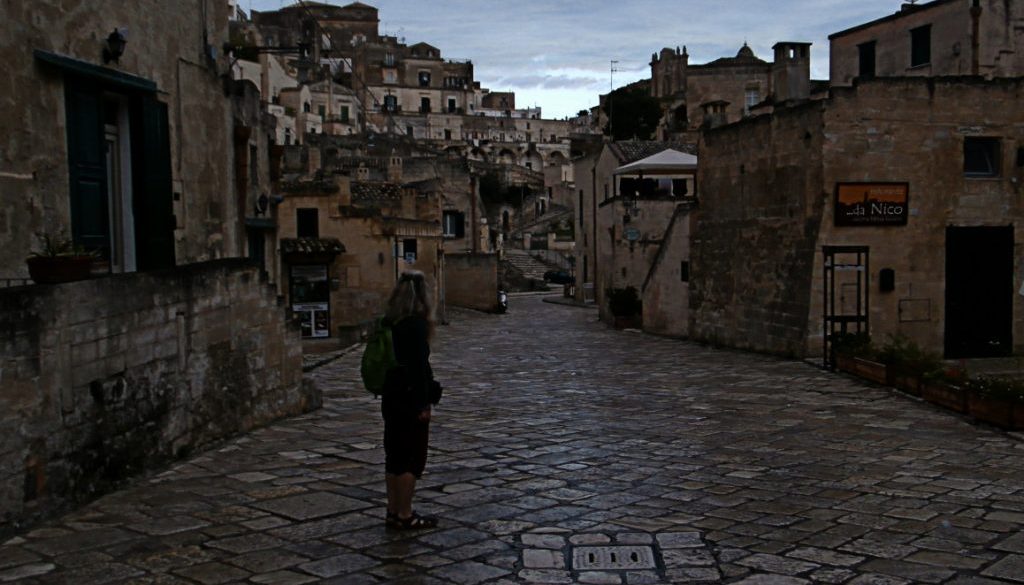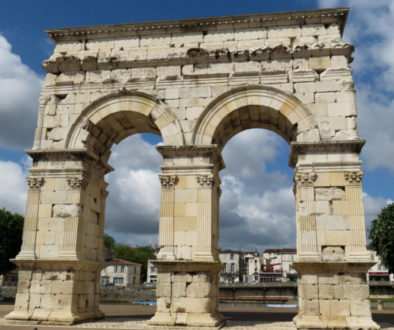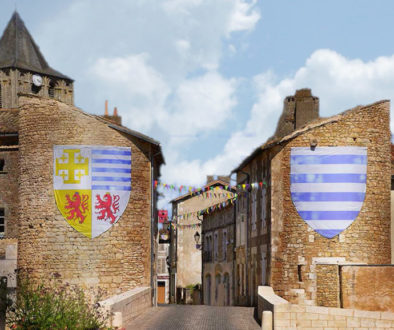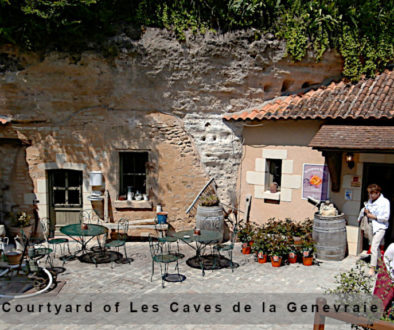MATERA AT SUNRISE – WE SEE WILD BOAR!
I CHICKEN OUT OF CROSSING THE GRAVINA.
Before Vivien’s flight back to the UK on 12th October I insisted that she and Graham have a day to themselves where they could explore Matera further. Much as I longed to go into and around that ancient troglodyte city I knew that all those steps and slopes would defeat me.
Besides – they would also be able to explore the River Gravina and the other side of the gorge, where the early cave dwellings and very early Christian cave churches were. (The frescoes in these are especially precious.) To reach them they’d have to take numerous steps down to one of those swaying rope-type bridges that are slung from side to side.
I shuddered from the mere thought of it, even if I could have managed to get down there (and more importantly, up again.) I have no head for heights. (So from now on Graham will write this post.)
EARLY MORNING START TO CATCH MATERA AT SUNRISE
Hi- Graham here, with my account –
I wanted to see Matera at sunrise so we left the Masseria Mazzapede while it was still dark. Though wanting to get to Matera as soon as we could, I drove slowly down the rocky track. The sky was quickly lightening in the east, and the outline of Matera stood out in black silhouette on the high hill in front of us as we sped down the almost empty Strada Statala 7 (the fast road in). My hope was to be at the top of the ravine when the sun broke over the far hill, so that we could watch the light chase the shadows out of the Sassi as it climbed free of the land. I had once seen a film of this happening, and the colours of the Sassi being revealed as the light became more intense was something I wanted to witness at first hand.
I parked up on Via Santo Stefano, close to the junction that took us down into the Sassi. Be warned; unless you can read the ‘Zona Traffico Limitato’ signs properly, don’t disregard them. The Sassi is one of the areas in Matera that is regulated by them. We have twice in Italy unwittingly crossed such boundaries – once only by yards. On each occasion we were shocked when we received large bills (over £100 sterling) through the post a full year after returning home.
WE WEREN’T DISAPPOINTED
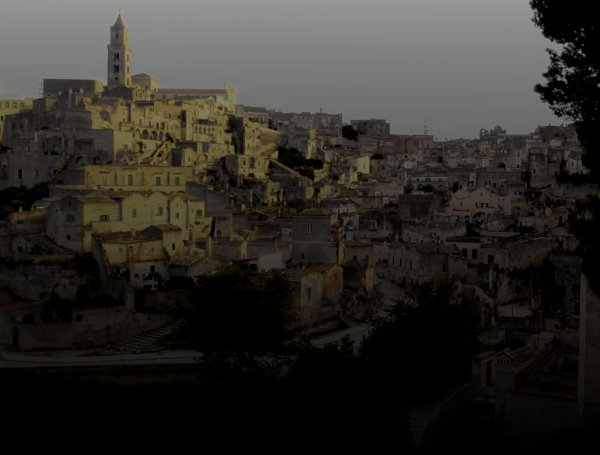
A little disappointed that the sun had already shaken off its earthly shackles, Vivien and I started down into the Sassi. As we came up to the Convent of Saint Agostino we had a clear view over the Sasso Barisano to the Cattedrale di Maria Santissima della Bruna. It stood on a high central spine of the ravine that split the Sassi in two, the other half being called Sasso Caveoso.
We were lucky, for although the cathedral was already lit up by the lemony light of sunrise, sharply golden against a cloudless, pale sky, the sun had yet to wash the shadows out of the more secret places of the Sasso Barisano. As we stood there the light seemed to run like water over the old stones of the city, washing the grey tomb of early dawn to transform it into a live, magical city of dreams. Even the birds, hitherto silent, gave voice in a surrounding, resounding chorus. The whole glorious transformation took less than a minute, leaving us speechless. We carried on silently, down to the entry point into the ravine itself, at a car park on the Via Madonna delle Virtù.
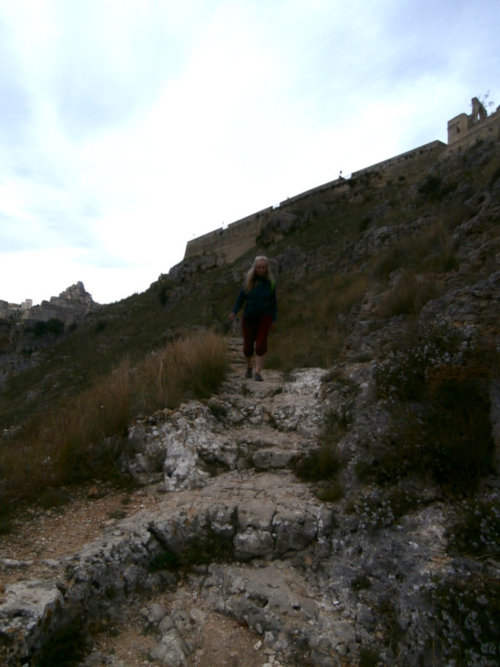
DOWN THROUGH COOLNESS TO A SURPRISE
It is a well-worn track that leads to the bottom of the ravine, where the Gravina di Matera runs through it. I advise at least stout trainers or walking shoes. I was wearing sandals, and if I should go again I’d wear something more supportive. Though it is neither the steepest, nor deepest gorge I’ve been in – you still need to be moderately fit.
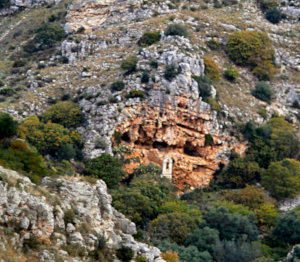
As the track snaked down we were able to see more of it than peering over from the top. In places it was honeycombed with caves, and on the far side, in what seemed an inaccessible location, stood what looked to be a shrine in front of some caves. There are many cave churches in the ravine, and we were hoping to explore at least one.
It took us about ten minutes to reach the river and although it wasn’t that deep, it was flowing pretty swiftly. From the signs on both sides of the banks we learned that the Gravina could become a raging torrent.
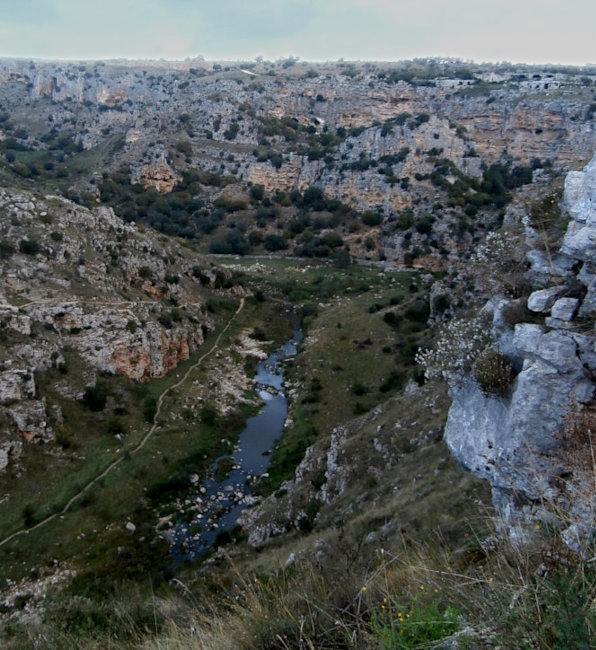
We were standing there gazing at the swirling water when movement on the far bank caught our attention. Would you believe it? Right in front of us, no more than thirty feet away, trotting in crocodile fashion, came a line of five wild boar. Presumably the two bulkier and darker-coated were adults. They were followed by five smaller, lighter coated, showing dark spots on their backs – obviously their offspring. Bringing up the rear, the runt scrabbled along to keep up.
When talking about these creatures Giuseppe had said that the chance of seeing one was very rare, as they were extremely shy and kept away from habitation. They evidently hadn’t seen us or reckoned us as a threat, because they didn’t hasten their speed as they came adjacent to where we were standing. We deduced they were taking a well worn, if very narrow track that wove around large rocks and bushes. Finally, not slackening their pace and following the leader, they climbed a steep little bank and disappeared upstream amongst the undergrowth. As it turned out from the sign on our side of the river, we were to go the same way. In the distance we could make out a flimsy looking suspension bridge.
Vivien and I glanced at each other, having the same thought. We both then came to the same conclusion.
‘They’ll be long gone by the time we get there.’
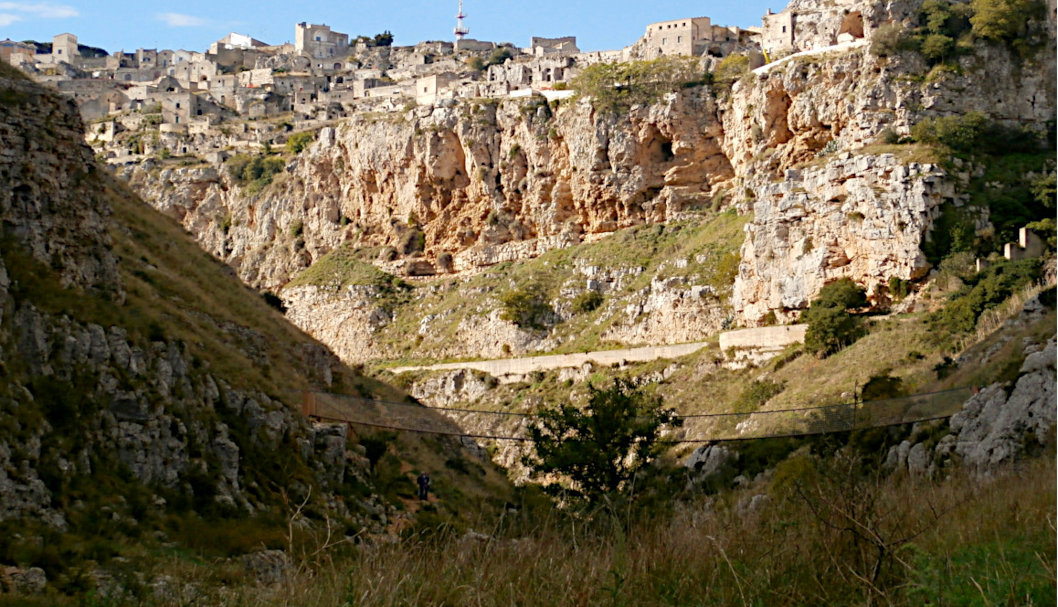
THE WATER RUSHING 30 FEET BELOW US
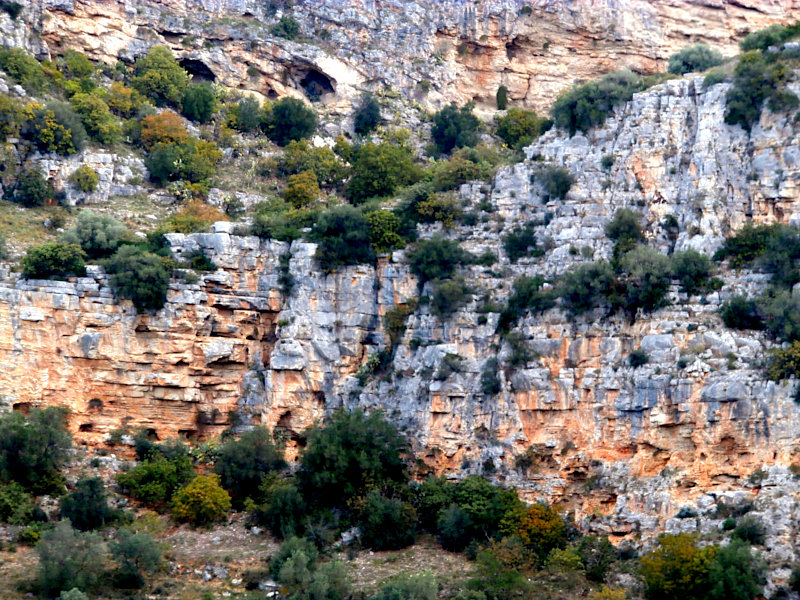
The bridge, when we reached it, was a much more substantial job than seen from a distance. Even so, it was single passage only. To put minds at rest – even Jackie could have made it across, and she hates heights and anything that feels the slightest bit unstable. The two base cables were anchored to large concrete blocks that had been sunk into the bedrock. From each concrete block stood two thick concrete pillars about 4.5ft high. The top cables anchored to the back of the concrete block ran over the top of the pillars and were parallel with the base cables for the entire length of the bridge. Attached to top and bottom cables was a steel woven mesh, so fine that only a small child could put their hand through. The gangway itself was probably no more than 1.5-2 ft across, and made of thick narrow boards, maybe 6-8 inches wide, (There is no appreciable gap to look down between them.) This allows the bridge to flex, and not become too stiff.
Like all rope bridges there is a slight up-and-down movement with every step, and also swaying; but if you walk in a gentle, smooth way and not jerkily, the movement is not alarming. For people like my wife Jackie, these bridges are safe if they are kept up – and it’s worth the knee tremble. (Sez you, Darling – Jackie).
By the time we had crossed the bridge the sun was fully up, though deep down in the ravine it was still shady and cool. The climb up the other side to the top took half an hour, allowing a couple of five minute breathers, but once on top it was worth the climb. The whole of the Sassi was spread out before us in the early morning light and we were all alone.

THE CITY OF STONES
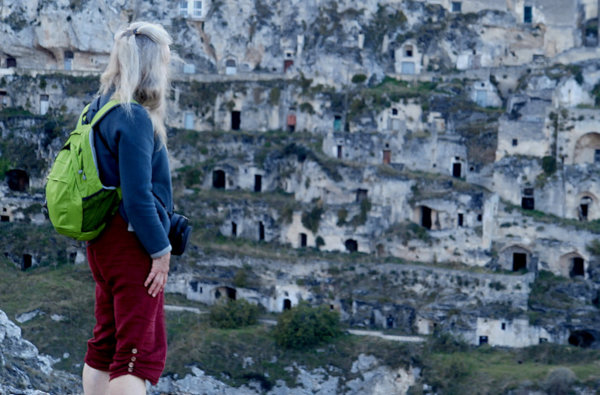
The Sassi has two very distinctive areas, with the Cathedral and its Duomo Piazza being the most prominent feature that separated the Sasso Barisano from the Sasso Caveoso. What was also very evident was that the Barisano was in a better state of renovated repair. The further left we looked in the Caveoso section the more tumbledown and ruinous it became. At the party Giuseppe had taken us to when we had just arrived I had met a couple who worked in Matera’s tourism department. They had mentioned that a section of the Sassi, instead of being handed over to be cleaned up, would be conserved and kept as it was so that future generations would know how the Sassi had been when known as ‘The Shame of Italy’- and so that sad end to a once-proud history was not altogether lost and completely prettified as was fast happening to the rest of the Sassi.
Now, looking from our vantage point, I mentioned this to Vivien – and we both agreed that it was a wise decision.
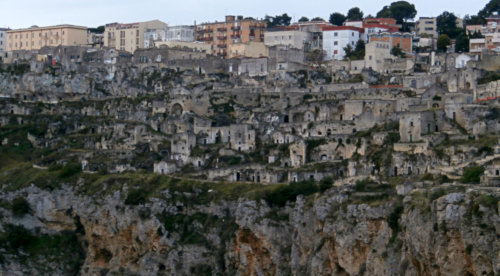
Later, when studying a map of the area where we were standing, I found it was called Parco Murgia Timone, and that within two hours it would be full of coaches and hundreds of tourists. We stopped at four of the cave churches while we were there. Unfortunately, they were all locked, and although we tried to peer inside we could not see the famous frescoes that adorned some of the walls. We stood just above St Vito alla Murgia and I endeavoured to take a series of pictures of the Sassi that I could later stitch together. It wasn’t altogether successful, so I have not included them here.
Text by – Graham & Jackie Usher, SWWJ. (aka author Debbie Darkin, & ‘Graham Liverpool’ on Trip Advisor.)
Photographs by – Graham Usher.
![]()

